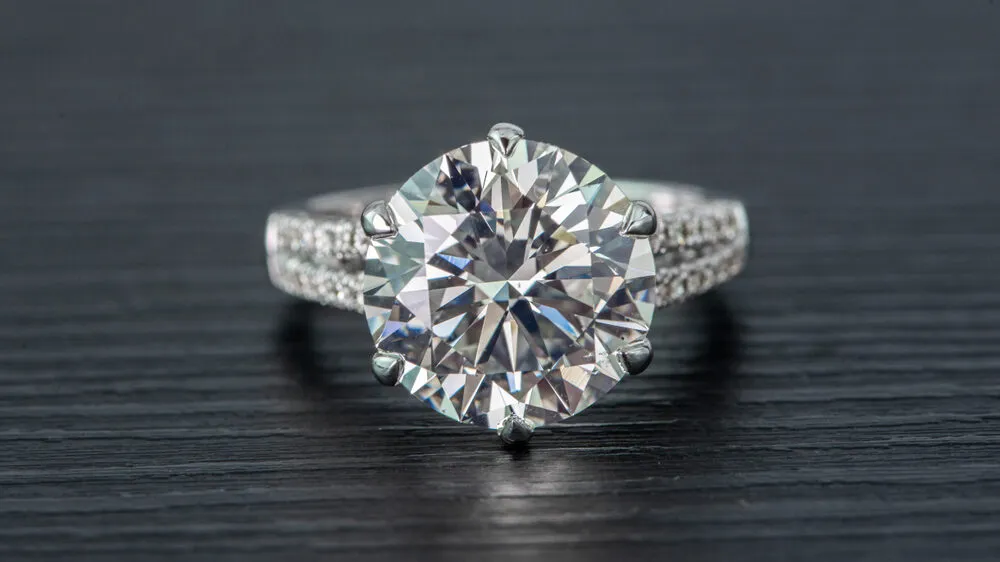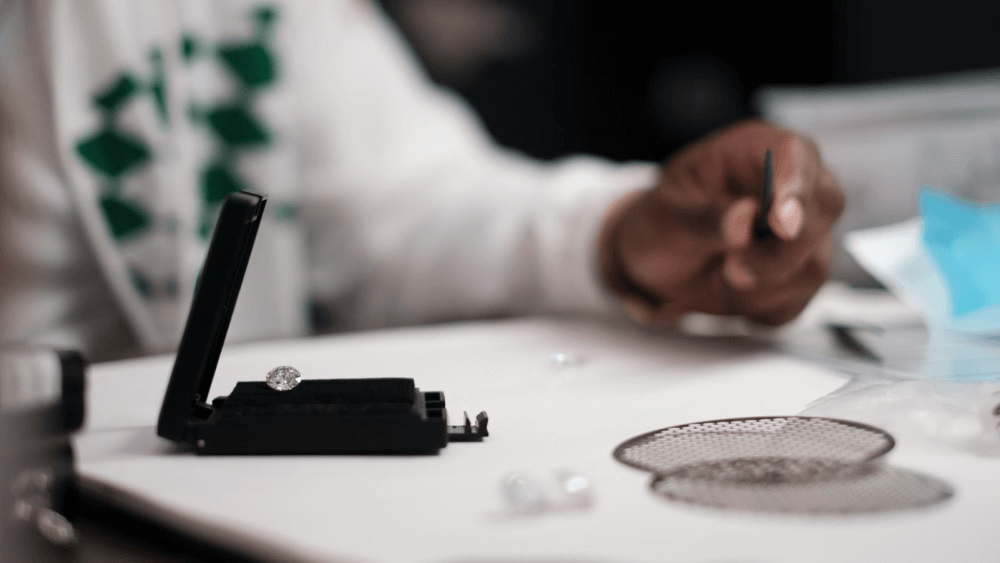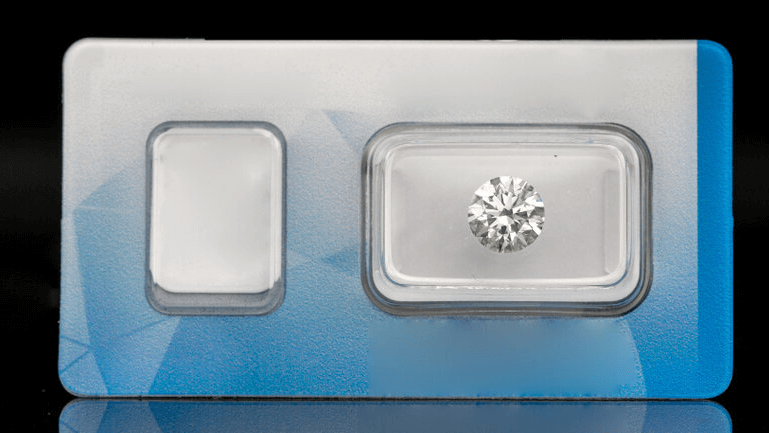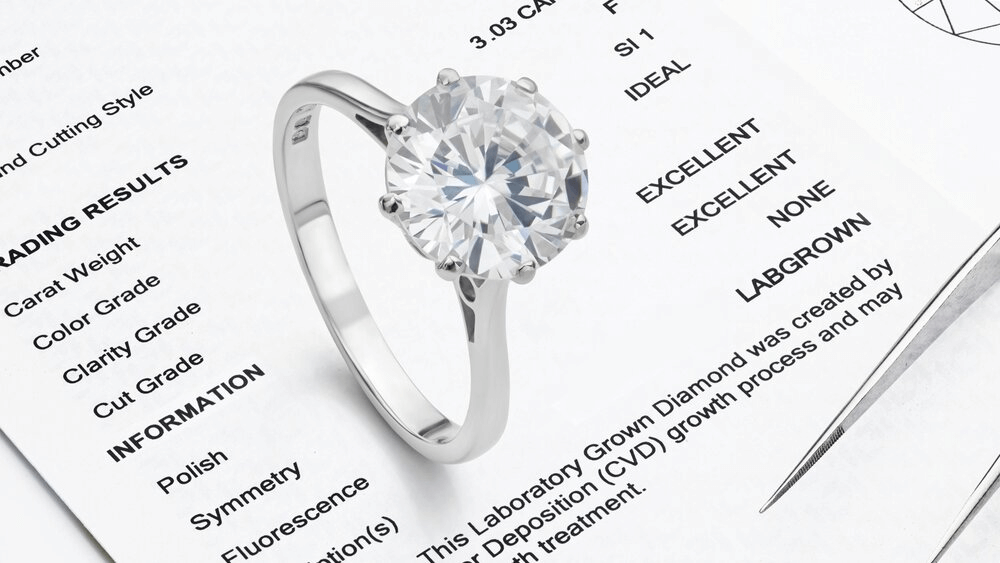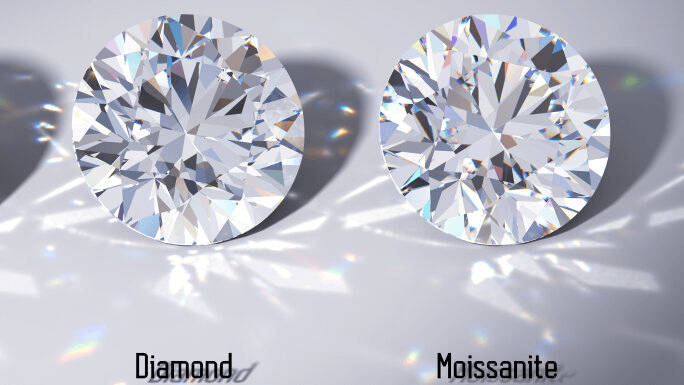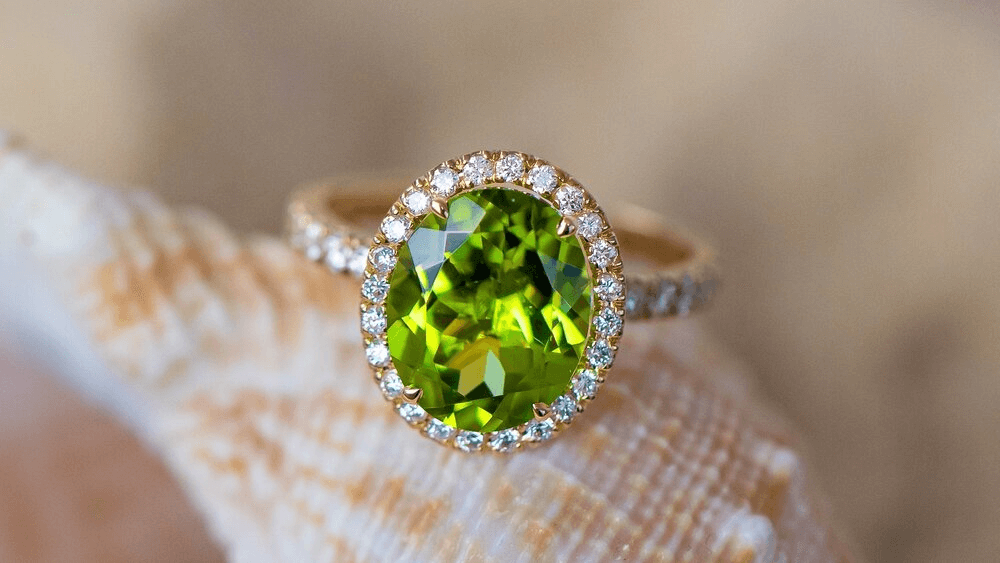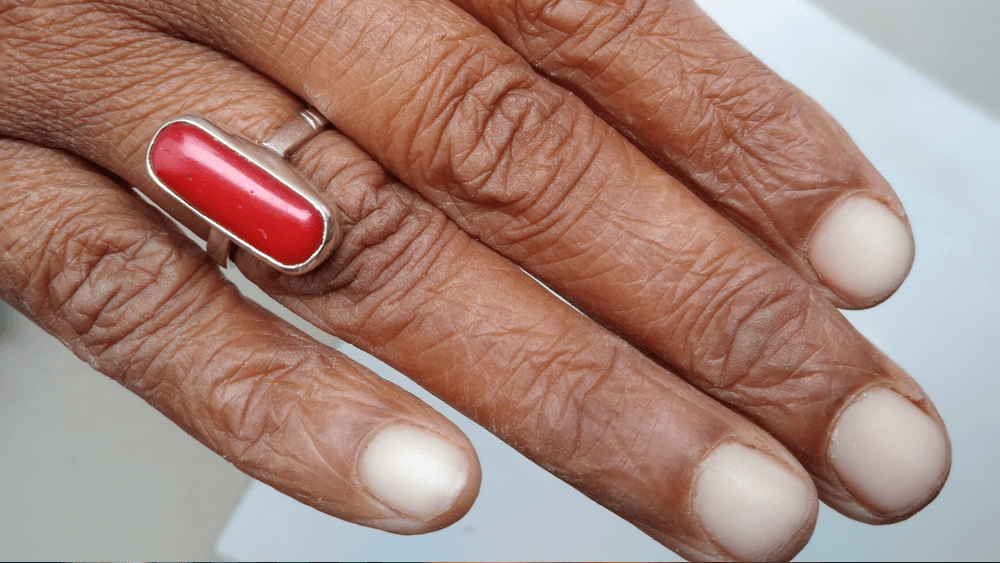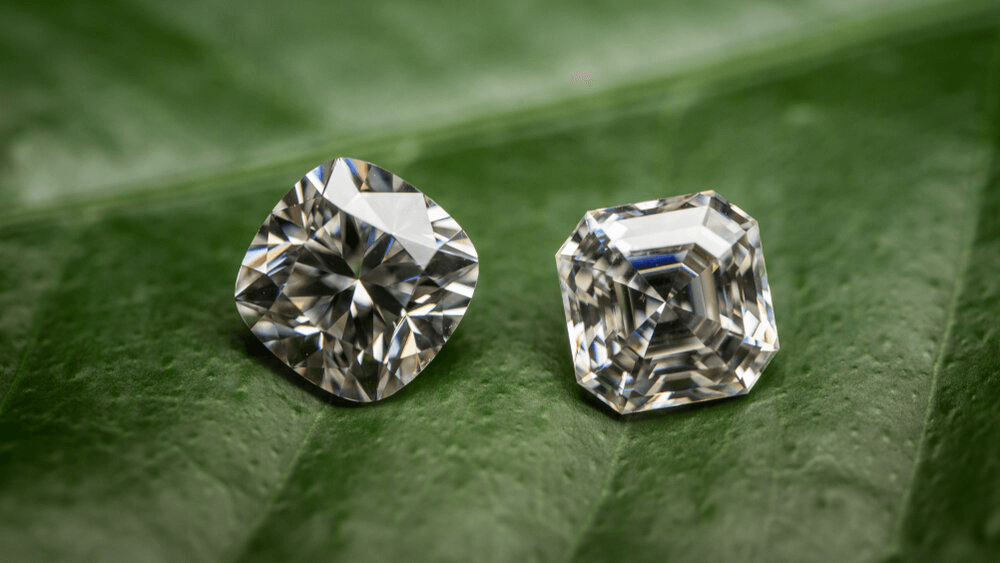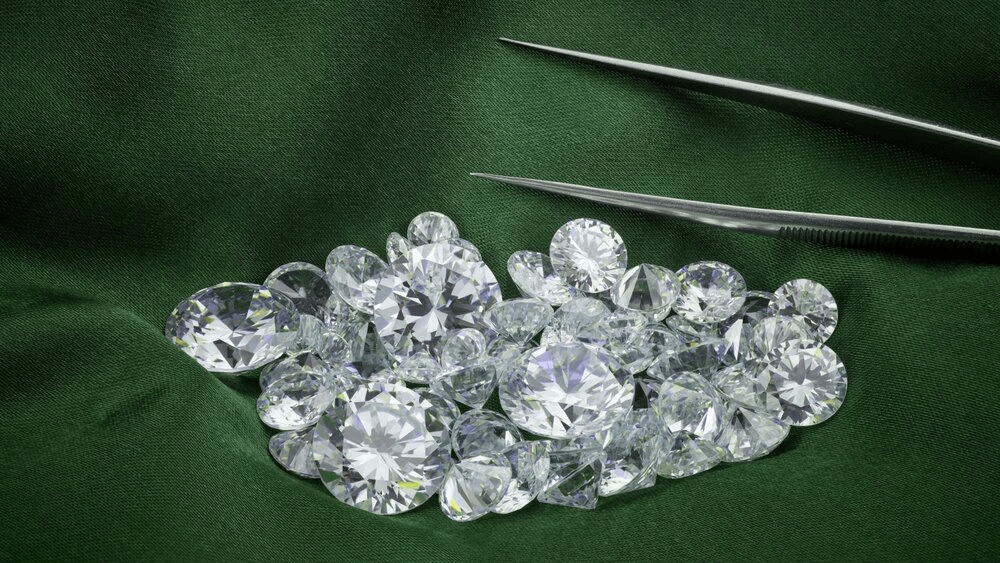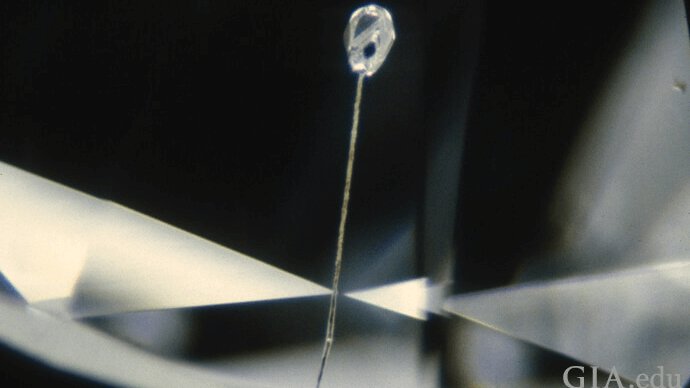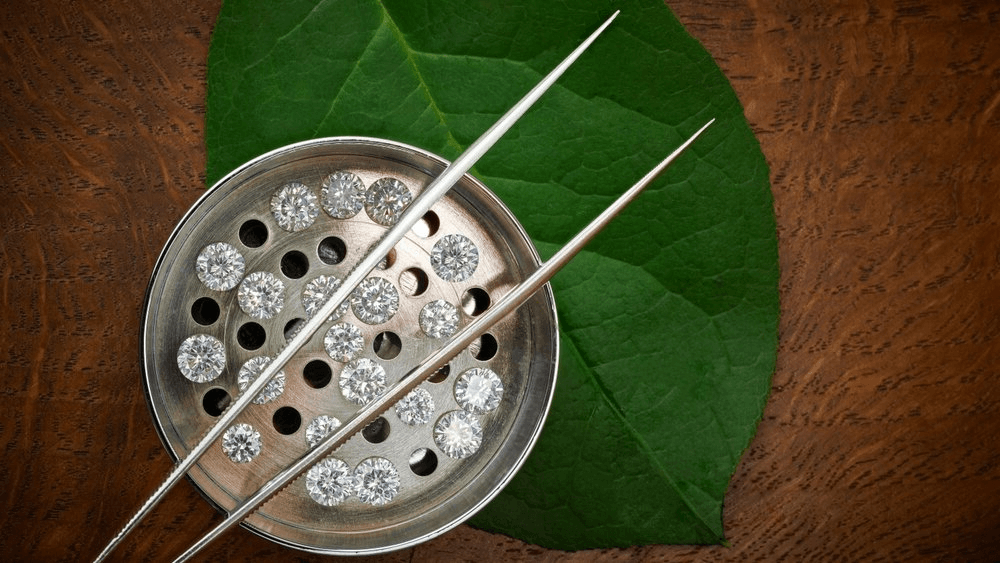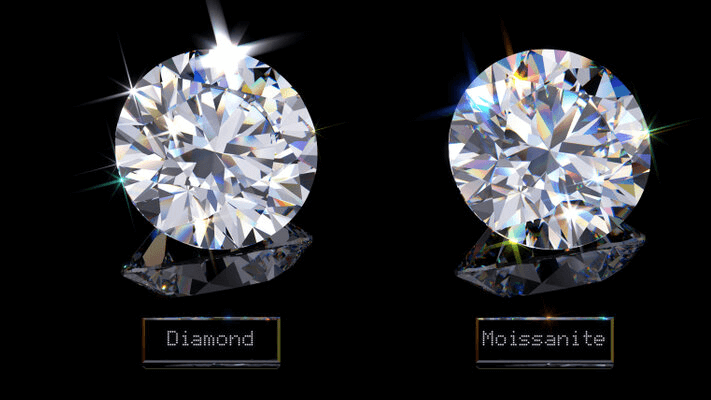Fake or Fabulous? Cubic Zirconia vs Diamonds

By Gary A.

Edited by Olivia H.
Published Mar 17, 2022
Edited on Mar 31, 2025
Diamonds are unrivaled in their popularity and symbolic meaning, representing love and commitment, though their high cost often prompts shoppers to consider alternatives like cubic zirconia and moissanite; however, opting for these simulants can lead to disappointment due to their inferior quality and durability.

Navigate This Guide:
- 7 Quick Tips When Buying a Diamond Engagement Ring and Examining Synthetic Diamonds
- Introduction: Unveiling the Sparkle
- Key Focus: Cubic Zirconia vs Diamond
- The Value of Cubic Zirconia
- Aesthetics and Brilliance
- Strength & Durability
- Cubic Zirconia vs Diamond Side by Side
- Our Expert Take
- 7 FAQs
Before we dive deeper into the specifics, here are some practical tips to help guide your decision-making process:
7 Quick Tips When Buying a Diamond Engagement Ring and Examining Synthetic Diamonds
- Tip 1: Examine the Refractive Qualities Cubic Zirconia vs. Diamond: Observe how light interacts with the stone. Diamonds have a high refractive index, creating a unique sparkle known as “fire.” Cubic zirconia, while sparkly, often exhibits a more rainbow-like effect, lacking the depth and brilliance of real diamonds.
- Tip 2: Check for Flaws and Inclusions Natural Markers: Real diamonds often contain tiny imperfections called inclusions. In contrast, cubic zirconia stones are usually flawless due to their lab creation. An utterly flawless stone can be a sign of a synthetic diamond.
- Tip 3: Test Hardness and Durability Mohs Scale of Hardness: Diamonds are the hardest known natural material, scoring a 10 on the Mohs scale. Cubic zirconia ranks lower, around 8.5. Diamonds are resistant to scratches from most materials, whereas cubic zirconia is more prone to scratching.
- Tip 4: Look at the Stone’s Color Color Analysis: High-quality diamonds are often graded for their lack of color, appearing more transparent. Cubic zirconia tends to have a slightly yellow or grayish tint, especially under natural light.
- Tip 5: Consider the Stone’s Weight Density Differences: Cubic zirconia is heavier than diamonds of the same size. If you have access to a precise scale, comparing the weight of the stone to known diamond weights can provide insights.
- Tip 6: Analyze the Price Point Price as an Indicator: While not always definitive, the price can be a strong indicator. Diamonds are significantly more expensive than cubic zirconia. A lower-priced stone that looks like a diamond could be a hint towards cubic zirconia.
- Tip 7: Observe the Stone’s Aging Long-Term Appearance: Over time, cubic zirconia can lose its luster and become cloudy, whereas diamonds retain their brilliance. Observing older pieces of jewelry can provide clues about the stone’s authenticity.
Now that you’ve got these practical tips, use Jeweler AI below to find the perfect engagement ring that suits your style and budget:
Introduction: Unveiling the Sparkle
Of all the gemstones in the world, diamond is the unrivalled. In terms of popularity, romance, esteem and strength or whatever else, most people would agree that, for an engagement ring, there’s no contest between diamond and some other potential alternative. For most of us, it’s not even a choice.
This is a mixed blessing. On the one hand, beautiful diamonds make beautiful rings and, more than any other gemstone, their meaning is incontrovertible: love, commitment, and unending devotion.
On the other hand, diamonds are expensive, and creating something that will surpass her expectations (whether they are conscious or subconscious), takes a major investment. Finding a diamond that ticks every single one of our boxes can stretch even a healthy budget.
This is where alternatives – diamond simulants – like cubic zirconia and moissanite start to pique some shoppers’ interests. Without experience, their benefits seem to outweigh their negatives – but there’s a lot more to it than what meets the eye.
Key Focus: Cubic Zirconia vs Diamond
Chances are, you’ve heard of cubic zirconia – maybe even bought an item that featured cubic zirconia in the past – but do you know what it really is – or what it’s worth to you?
What is Cubic Zirconia? The Synthetic Sparkler
It is a form of crystalized zirconium dioxide, characterized by a cubic structure (similar to diamond). Although it can form in nature, the cubic zirconia you know and see in jewelry stores is man-made. It is also referred to as ‘CZ’ in listings.
It shares some visual similarities with diamond, including a high refractive index (high, though significantly lower than diamond’s, meaning in a side-by-side comparison you will notice a difference in light performance). Like diamond, they can be white (translucent) or colored, and cut into a wide range of shapes most commonly associated with diamond. When white, they are almost always colorless (equivalent to the GIA’s D grade on the color scale).
Structurally, the two substances are very, very different. Cubic zirconia is hard, but not as hard as diamond. This means that, with time and wear, the precise edges of a cut cubic zirconia will wear down, round off, and lose definition.
It is also a dense substance – about 75% heavier than diamond. If a jeweler were to place a diamond in one of your hands, and a cubic zirconia of the same size in the other, you would probably find it pretty easy to identify which one was which.
Then again, if you’d have taken a look at the price tags before the jeweler placed the stones in your hand, however, you’d have already identified which one was which, because cubic zirconia is a lot cheaper than diamond.
Origins and Composition
It wasn’t until the late 1970s, less than fifty years ago, that the methods for growing cubic zirconia crystals was advanced to a point where it was ready for use in jewelry.
By the early 1980s, Swarovski perfected their own type of cubic zirconia – now known worldwide as the Swarovski Crystal. Ever since then, the jeweler has maintained a strong reputation for offering a more affordable alternative to diamond jewelry, and putting out some of the strongest marketing campaigns for cubic zirconia that the world has seen.
Nevertheless, plenty of other jewelry makers have found success with cubic zirconia over the years since Swarovski first started making waves in the fashion jewelry world. It’s a useful gemstone for lower cost pieces, and definitely has a place in the wider jewelry world.
Where it hasn’t found much uptake, however, is in fine jewelry and engagement ring design.
Natural cubic zirconia has never been used in jewelry.
Colored zirconia is made through a process known as ‘doping’, whereby specifically chosen trace elements are used to alter the color of the stone.
This is done during the manufacturing process. Elements like nickel, iron, copper, cobalt, and manganese can be added in order to create a rainbow of different colors. Colorless cubic zirconia is most popular, however, since it bears the closest resemblance to diamond.
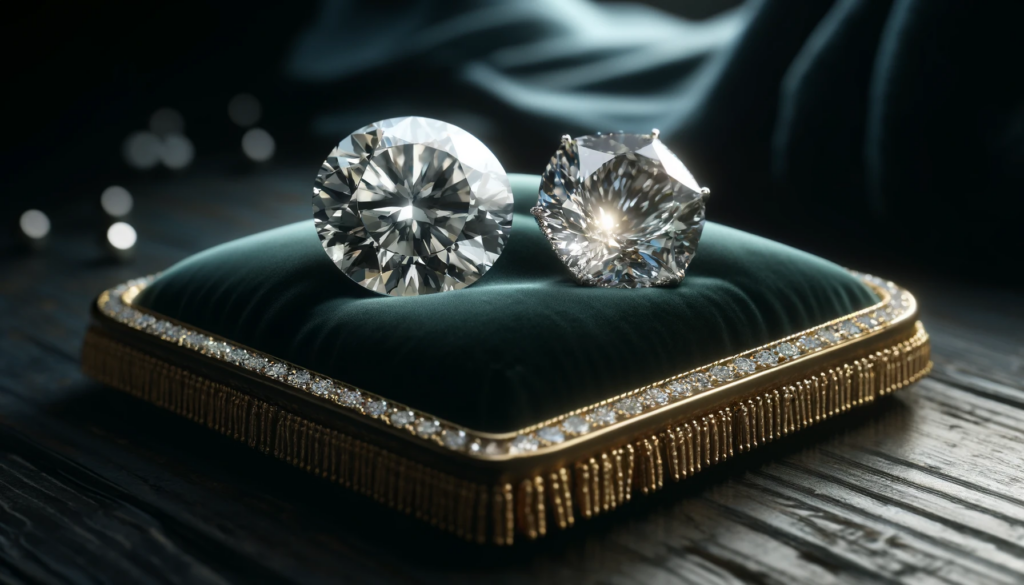
The Value of Cubic Zirconia
Cut and polished, 1 carat of cubic zirconia will cost you around $20 – less than 1% of the cost of a 1 carat diamond.
It’s also commonly used in fashion jewelry sold by cheaper jewelry stores, since it’s easily affordable and effective at loosely mimicking the appearance of a move valuable stone.
Why Cubic Zirconia is Cheaper Than Diamond
It is mass-produced to meet the demand for a cheap, readily-available material for fashion jewelry.
Since the jewelry world does not use any naturally-occurring cubic zirconia, there is no risk of it ‘running out’, or of difficulties in mining it from the earth. As a result, it barely holds any monetary value.
It also holds very little social value. Cubic zirconia is widely recognized as a cheap, inferior, and characterless simulant for diamond. Like any other man-made gemstone – including lab-grown diamonds – cubic zirconia is lacking more than just diamond’s beauty. It’s also lacking the sentimental value and romantic backstory that make diamonds irreplaceable.
Aesthetics and Brilliance
For most diamond simulants – even those that are more convincing and valuable than cubic zirconia – light performance tends to be the biggest betrayer. While these simulants can be cut and polished to resemble diamond, no amount of faceting will make them sparkle with fire and brilliance like diamond.
While it does sparkle, jewelers and gemologists can easily identify cubic zirconia, and non-experts will spot the difference easily with a side-by-side comparison.
A diamond’s sparkle is a combination of brilliance (white light) and fire (colorful light), whereas cubic zirconia simply emits a range of colorful flashes. This means that it has neither brilliance nor fire and, while the results are pretty enough, they’re noticeably less impressive than those you’ll be used to seeing in diamonds.
Again, there’s nothing wrong with this in regular, fashion jewelry – but, if you’re considering a cubic zirconia for an engagement ring, or any other piece of fine jewelry, you will wind up disappointed.
Why Cubic Zirconia Loses Sparkle Over Time
Eventually, yes, with regular wear a cubic zirconia will become damaged and worn and will appear dull as a result.
Cubic zirconia can last a few years before the damage really starts to take its toll, but it will start to take its toll eventually – and, as you can imagine, noticing the telltale signs of a gemstone reaching the end of its life can be devastating if that gemstone belongs in your engagement ring.
Cubic zirconia is also porous, meaning it can absorb pollutants. With regular contact with the wearer’s skin, the gemstone will ‘draw in’ oils, and can start to appear cloudy as a result. While cloudy diamonds do exist, they are mined from the earth that way. A real diamond will not turn cloudy.
Cubic Zirconia Color Grades
As we mentioned, cubic zirconia is almost always equivalent to a D color grade – although it is important to remember that the GIA doesn’t grade cubic zirconia, or any other diamond simulants.
It is pretty common for manufacturers to present diamond simulants to be using the grades labs like the GIA utilize on diamonds. This isn’t always necessarily intended to dupe the shopper into buying a cheap alternative for a lot of money – sometimes, it’s simply used as a common language. Either way, don’t assume that these simulants have passed through the hands of exacting graders, like those at the GIA.
In other cases, the quality of a cubic zirconia is portrayed using the following scale:
- AAAAA (best)
- AAAA
- AAA
- AA
- A
- AB (worst)
Most cubic zirconia stones are also internally flawless. This is another major giveaway, since most diamonds purchased for engagement rings are graded much further down the clarity scale. True, the vast majority of these diamonds are eye clean, but their unique flaws will be clearly visible under a microscope.
Strength & Durability
While beauty goes a long way, one of the most valuable aspects diamond has is its strength, and its ability to withstand years and years – entire lifetimes – of wear without breaking or showing signs of its age. So, how does cubic zirconia stack up against diamond?
With regular wear, cubic zirconia will scratch relatively easily.
As we mentioned, cubic zirconia is softer than diamond. In fact, it sits at around about 8 – 8.5 on the Mohs hardness scale, while diamond, being the hardest natural substance on earth, sits at 10. It’s not a major difference, and it’s not like cubic zirconia is as soft as easy to scratch as talc or 24K gold, but, when the ring you’re buying is intended to be worn day in, day out, for many decades, the difference becomes a lot more significant.
How Long Cubic Zirconia Will Last
A couple years, unless it’s worn sparingly. Its relative softness and porousness mean it’s not safe to wear all the time, unless you’re happy to replace the item of jewelry every few years.
For an engagement ring, this makes cubic zirconia a worse diamond simulant than moissanite – which, while far from ideal for jewelry like this, is at least hard enough to withstand more punishment on the finger.
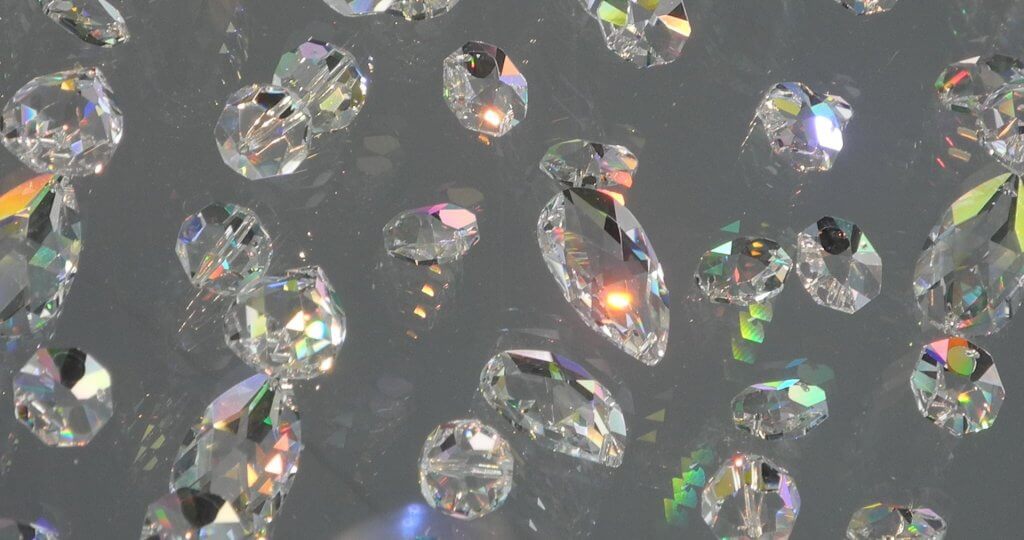
Cubic Zirconia vs Diamond Side by Side
It’s not hard to see why cubic zirconia has a pretty solid place in the jewelry world. In a static photograph, the shape and faceting used on a cubic zirconia – coupled with its clear, seemingly flawless structure – means that it can easily be taken for diamond at a glance. Experts won’t be fooled – and even non-experts will notice the difference in person – but, for low cost pieces, its ability to mimic diamond has a certain value for shoppers.
This goes hand-in-hand with the issues that plague online shoppers. For scammers, cubic zirconia is an incredibly valuable gemstone, since there’s a good chance it’ll pass as diamond to unsuspecting shoppers looking for a great deal online.
There is no risk of this happening on the more reputable online vendors , but, when you’re shopping from sources like eBay, Amazon, or online marketplaces, who’s to say whether the picture you’re looking at is diamond or cubic zirconia?
There’s more to it than looks and strength alone. Here are a few other pointers to consider if you’re still wondering about cubic zirconia’s potential for your ring.
Cultural Significance and Symbolism
Cubic zirconia is not backed by the same level of sentimental value that makes diamond such an obvious choice for a proposal. With natural diamond, you are offering your partner one of the oldest – and by far the most beautiful – pieces of the earth possible. With over a billion years’ worth of history behind it, an unlikely journey through miles and miles of earth and halfway across the planet and, finally, into a jewelry store, a diamond has a lot more emotional resonance with owners than its ability to sparkle in the light.
This is one of the reasons why so many people feel that lab grown diamonds just can’t compete with natural diamond. While they are far more convincing than cubic zirconia, moissanite, or any other diamond simulant, they are still lacking some of the most romantic aspects a diamond engagement ring is able to offer.
Cubic zirconia was overlooked for years after its initial discovery. It was considered to be an uninteresting substance lacking any real value for anyone. Then, when it was taken more seriously, processes were established to produce more and more of it – more than we could possibly need – in order to squeeze as much value out of it as possible.
You can get a 1 carat cubic zirconia – cut and polished – for around $20. That tells you a lot about how much manufacturers have to make in order for the endeavor to prove financially worthwhile, and how little time or attention must be invested into a single cubic zirconia.
Formation and Rarity
Unlike moissanite jewelry, which is still nowhere near as prevalent as diamond jewelry, cubic zirconia is an extremely common gemstone in the jewelry world. At the same time, it’s not a common sight in fine jewelry stores, or higher end jewelers, so it really depends on where you’re shopping – and what you’re looking for.
There are plenty of reputable jewelers selling cubic zirconia pieces. As we mentioned above, those stores include Pandora and Swarovski – popular destinations for fashion jewelry, and budget gifts. It’s not the case that cubic zirconia is useless, since we can’t all have a jewelry box filled with diamond earrings, necklaces, bracelets and cocktail rings, but that these stores aren’t supposed to be confused with purveyors of fine engagement rings and bridal jewelry.
So, yes, cubic zirconia is widely available – but, no, cubic zirconia is not widely available if you’re searching for those once-in-a-lifetime, get-down-on-one-knee pieces to last you every day, for the rest of your years.
Our Expert Take
You could fine a cubic zirconia ring – one that closely resembles a typical diamond engagement ring in terms of shape and design – for less than $50. From a distance – say, across a brightly lit room – there’s a strong chance no one would be any the wiser, and they’d simply assume that the person they were looking at had a very large, very impressive engagement ring on their finger.
Any closer than that, however, and the truth becomes apparent very quickly. Consider the fact that the most important person in the equation – the person who is going to be wearing that ring – will always be viewing it right under their nose. The differences between diamond and cubic zirconia will, to your partner, be easily noticeable.
Cubic zirconia is a great crystal for low cost jewelry. Companies like Swarovski have managed to bring out its very best side, and to make the most of its unique traits, rather than simply banking on its resemblance to diamond. Most people wind up with a few CZ pieces in their collection, and there’s no issue with that.
The issue arises when we try to convince ourselves cubic zirconia is worth more than it really is – both financially, and sentimentally.
7 FAQs
- Q: How Can I Tell the Difference Between Cubic Zirconia and a Diamond?
A: Look for sparkle differences (diamonds have a unique ‘fire’), check for flaws (diamonds often have minor inclusions, cubic zirconia usually doesn’t), examine the weight (cubic zirconia is heavier than diamond), and consider the price (diamonds are significantly more expensive). - Q: Does Cubic Zirconia Scratch Easily Compared to Diamonds?
A: Yes, cubic zirconia is more prone to scratches due to its lower hardness (8.5 on the Mohs scale) compared to diamonds, which are the hardest known natural substance with a score of 10. - Q: Will Cubic Zirconia Lose Its Shine Over Time?
A: Cubic zirconia can lose its luster and become cloudy with wear and tear over time, unlike diamonds which maintain their brilliance. - Q: Is Cubic Zirconia Worth Anything?
A: While cubic zirconia has its value in the jewelry market, especially as an affordable alternative to diamonds, it does not hold significant monetary value compared to diamonds. - Q: How Much is a 1 Carat Cubic Zirconia Worth?
A: A 1 carat cubic zirconia is relatively inexpensive, often costing just a fraction of the price of a real diamond, typically around $20 to $40. - Q: Can Cubic Zirconia Pass for a Diamond?
A: To an untrained eye, cubic zirconia can sometimes pass as a diamond, especially in smaller sizes. However, upon closer inspection by a gemologist or with proper tools, differences in brilliance, hardness, and internal characteristics can be identified. - Q: How to Clean Cubic Zirconia to Maintain its Shine?
A: Clean cubic zirconia with a mild soap and water solution, using a soft brush to gently remove dirt. Avoid harsh chemicals and abrasive materials to prevent scratches.
Unravel the mystery of cubic zirconia vs diamond with Jeweler AI – your expert guide in selecting the perfect engagement ring.
FOLLOW-UP GUIDE SERIES

